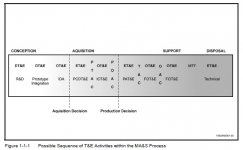Eye In The Sky
Army.ca Legend
- Reaction score
- 3,785
- Points
- 1,160
OT&E is a limited capacity that undergoes regular prioritization. There are not resources to assess all possible loadouts.
And "let's just fire and see what happens" is not a viable CoA.
Not to mention, there’s a significant amount of work just to get to OT&E itself. Huge.



